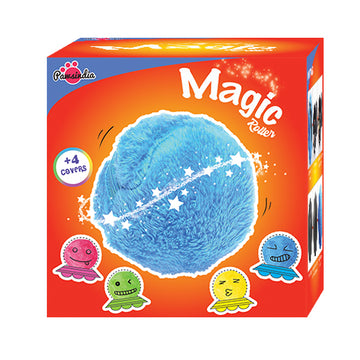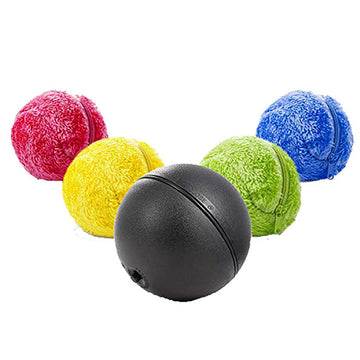Boxer

Boxer
| BreedHighlighs: |
|
Boxers are known for bursting with energy and plenty of exercise is a prerequisite for them. You should have the time, resolve, and vigour to give them the play and activity they need. Boxers are exuberant and will greet you ecstatically. |
| Weight: |
|
Male:25-32 kg Female:25-32 kg |
| Height: |
|
Male:57-63 cm Female: 53-60 cm |
| Life Expectancy: |
| 9-10 yr |
| Litter Size: |
| 6-8 |
| Breed Appearance: |
|
The Boxer's body is compact and sturdy. The size of the head is in proportion to that of the body. The muzzle is short and blunt with a distinct stop. The nose is large and black with very open nostrils. The jaw has an under bite. The eyes are dark brown in color. The ears are set high, either cropped or kept natural. When cropped, they are trained to stand up on the head, tapering to a point. When left in their natural form, the ears are thin, falling forward, lying close to the head. The neck should be round, strong and muscular, without a dewlap. The muscular front legs seem to be straight and parallel when viewed from the front. The back legs are muscular. The tail is set high and usually docked. The AKC severely penalizes a natural tail, while most of Europe has outlawed this practice. Dewclaws are usually removed. The short, smooth, close-fitting coat comes in fawn, brindle, tan, mahogany and black often with white markings. Boxers with a white coat cannot be registered with some clubs. |
| History: |
|
The breed burst onto the scene in different areas of Europe in the late 19th century and in the United States towards the turn of the 20th century. The American Kennel Club (AKC) registered the first Boxer in 1904, and acknowledged the first Boxer champion, Dampf vom Dom, in 1915. During World War I, the Boxer was co-opted for military work, embracing the role of a key messenger dog, pack-carrier, attack dog, and guard dog. |
| Originally: |
|
The Boxer was developed in Germany in the 19th century. The Boxer's ancestors were two German mastiff type dogs, the Bullenbeiszer and the Barenbeiszer. They were later crossed with the powerful ancestors of the Mastiff and Bulldog. Early Boxers were utilized for a wide variety of purposes, including dog fighting, bull baiting, cart pulling. They had also been put into exercise as cattle dogs, to round up livestock and to catch and pin wild boar and bison until hunters could arrive. They later hogged the lamplight as theater and circus dogs. |
| Currently Used As: |
|
Guard Dogs,Dog fighting |
| Training: |
|
The crate should be large enough that your English bulldog can sit up, lie down and stand on it comfortably. The dog should have enough room to stretch out, but excessive space might make the dog soil the crate. Dogs naturally desire to avoid soiling their immediate surroundings. This makes a dog crate a useful aid in house-breaking your English bulldog. English bulldogs cannot put up with weather extremes, such as excessive heat and/or humidity. |
| Health&Care: |
|
The bull dogs can be vulnerable to cardiomyopathy and other heart problems, sub-aortic stenosis and thyroid, skin and other allergies, epilepsy. They are more likely to pick up tumor-related diseases compared to other breeds. They are, moreover, quite susceptible to cancer, mast cell tumors, arthritis, hip dysplasia, back and knee issues. These dogs may drool and snore. The breed has excessive flatulence, especially when fed something other than their own dog food. Some white Boxers are prone to deafness. |
| Living Condition: |
|
Boxers will fit into an apartment quite well if sufficiently exercised. They are buzzing with energy and vigor in indoor conditions and at least an average-sized yard is a necessity for them. Boxers are temperature-sensitive, getting easily overheated and chilling very quickly. |
| Excersie: |
|
An active, athletic breed, Boxers need daily work or exercise, as well as a long brisk, daily walk. They also enjoy fetching a ball or other sessions of play. |
| Grooming: |
|
The Boxer's smooth, shorthaired coat is easy to groom. Brush with a firm bristle brush, and bathe only when necessary, for it removes the natural oils from the skin. Some Boxers try and keep themselves clean, grooming themselves like a cat, although some cannot resist rolling in another animal’s poop, which calls for a bath. This breed is an average shedder. |
| Pros: |
|
The pros of owning an English bulldog are so many that they can easily overpower the cons. There are exiguous dogs that have the same degree of stoicism as the bulldog, thereby making it the quintessential family pet. Children adore these dogs immensely. Bull dogs are known for their fidelity and affectionate attitude. They are the perfect “nanny” dog for children, and equally favoured by the elderly, not dashing around their feet and tripping them and large enough for them to be easily seen.The English bulldog, once he has surpassed the lively puppy stage, becomes stolid and sluggish, heavy and ponderous, and can hardly be provoked. Finding a short-tempered bulldog is out of the bounds of possibility. |
| Cons: |
|
There are some demerits of owning an English bulldog. He is definitely not easy to train due to his obdurateness; the bulldog will consume quite a lot of time to learn things, albeit once he has grasped something, it will be stamped on his memory forever. Food is the key to bulldog training (a system of rewards is the backbone of a suitable training mechanism as it makes them quite responsive and engaged).As a breed, the bulldog is an avid eater. So, the owner has to be pragmatic and ration food amounts to avoid this heavy breed from becoming seriously overweight. |












